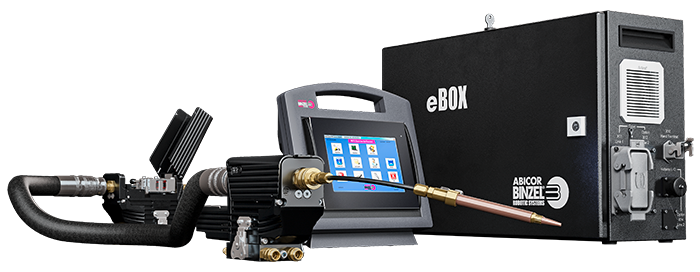Laser Welding
What is Laser Welding?
Laser welding is a technique combining different technologies to join pieces of metal or other materials together through the use of a laser. Laser welding can be done at high speeds, and provides an effective, economically efficient option where precise parameters or high production goals cannot be achieved by conventional welding.

Why Laser?
Benefits of Laser Beam Welding
Laser foundations are derived from laws of radiation and the study of stimulated emission. Defined as a device that stimulates molecules to emit light to produce a narrow beam of radiation, their use has been prevalent for over 60 years and continues to be extremely efficient in different industries and disciplines.
Keeping light waves narrowly focused provides the most significant advantages as all energy is focused into a single point rather than dispersed like in a flashlight beam. Lasers are chosen because they can amplify the power, brightness, and energy of light over distance, delivering hyper-focused, precise energy.
- Extremely precise, laser welding can deliver focused energy to an area that could be otherwise unreachable by conventional methods.
- Smaller heat signature, When the stress on a welded part or material is a concern, laser welding creates less heat in areas around the weld point which results in stronger welds and increased reliability.
- Laser use occurs in the open air and is independent of other methods where variables like environmental conditions must be considered.
- Part wear, Instead of tools like torches that wear down over time, laser welding is highly efficient, uses defined parameters, and can be automated using machinery and programming.
Types of Laser Processing
Remote
In remote laser welding, a laser beam is guided by fast-moving mirror systems in a scanner, which moves the beam precisely to the welding point and focuses the laser beam on the workpiece surface.
Simultaneously, the robot moves the scanner continuously over the component. In this way, movement times between the welding seams are significantly minimized, cycle times are reduced and part output is increased accordingly.
Tactile
In railway vehicle and automotive manufacturing, laser optics with tactile seam guidance are becoming increasingly chosen for the task of welding vehicle roofs, doors, battery boxes, and underbodies. Powered by a wire-fed system, the wire tip is used as a tactile sensor and the position of the laser beam is maintained on the joining edge.
The position and size of the laser spot are always constantly aligned with the wire tip enabling high-quality welding or brazing at high joining speeds.
Laser Welding Products
Explore our laser welding solutions below.

Blackbird Technology (Remote)
Utilized globally in cases where your process requires precise placement of energy, flexibility in processing, and world-class quality when welding vehicle parts such as car doors, seats and battery boxes, along with laser welded joints with high strength and reliable power transmission when producing batteries and electric motors.
Blackbird Robotics in partnership with ABICOR BINZEL produces powerful laser welding devices for remote laser welding in the automotive industry.

Tactile Laser Optics
Wherever the high power density of the laser needs to be converted into speed in order to bridge gaps reliably and economically, laser brazing and laser welding with filler material are required.
Find out more about flexible laser optics for car body construction, battery boxes, battery carriers and covers as well as for the construction of vans and rail vehicles.
4D WeldWatcher®
The WeldWatcher® indicates typical welding failures through high accuracy, automated laser process monitoring. WeldWatcher® will find failures such as gaps between sheets, lack of fusion, and porosity.
Wire feed Systems
With these high-precision, fast wire feed systems for laser welding and laser brazing in automotive construction, you play it safe. Interruptions or protrusions in the seam pattern belong to the past.
Laser Welding Applications
Laser Welding is Very Beneficial to Hair-pin Welding in Power Electronics
Welding of copper wires for electric engines involves using various cutting techniques and joint geometries to weld electric engines. The core issue is gap measurement and gap bridging. The Blackbird Approach identifies process requirements like flexible image recognition and smart decision making to first decide the system configuration, then choose the type of welding, and further adjust the direction and degree of illumination required.


Achieve the Highest Precision in Welding electric Stator Windings, Battery cells, and more
Welding electrical contacts required the fusing of different materials such as copper and aluminum. It is important that the path of the laser beam formed by a 2D scanner – can be adapted to the parameters required by the component. Scanners retain precise control of the seam geometry and welding depth. This is crucial when welding stator hairpins in electric motors, where absolutely no defects are permitted.
Tight connections are essential for the final sealing of battery cells and integration into the battery modules. The laser beam must be positioned and guided precisely to the welding contour. If oscillation is superimposed on the welding movement for this purpose, it is possible to achieve better bridging of gaps and to compensate for tolerances in the component while maintaining the same welding depth.
The Best Car Door Welding Eases QA and Lowers Maintenance Costs
Welding of large-scale body sheets in complex parts with 3D-Geometry and various weld seams. Solving the core issue of managing complexity, while keeping a low cycle time.
The Blackbird Approach uses the most intuitive programming on the market compatable with third party sensors to make efficnet placement of weld seams and maximizes lifetime with air management. Learn more about our system configuration when car door welding.





